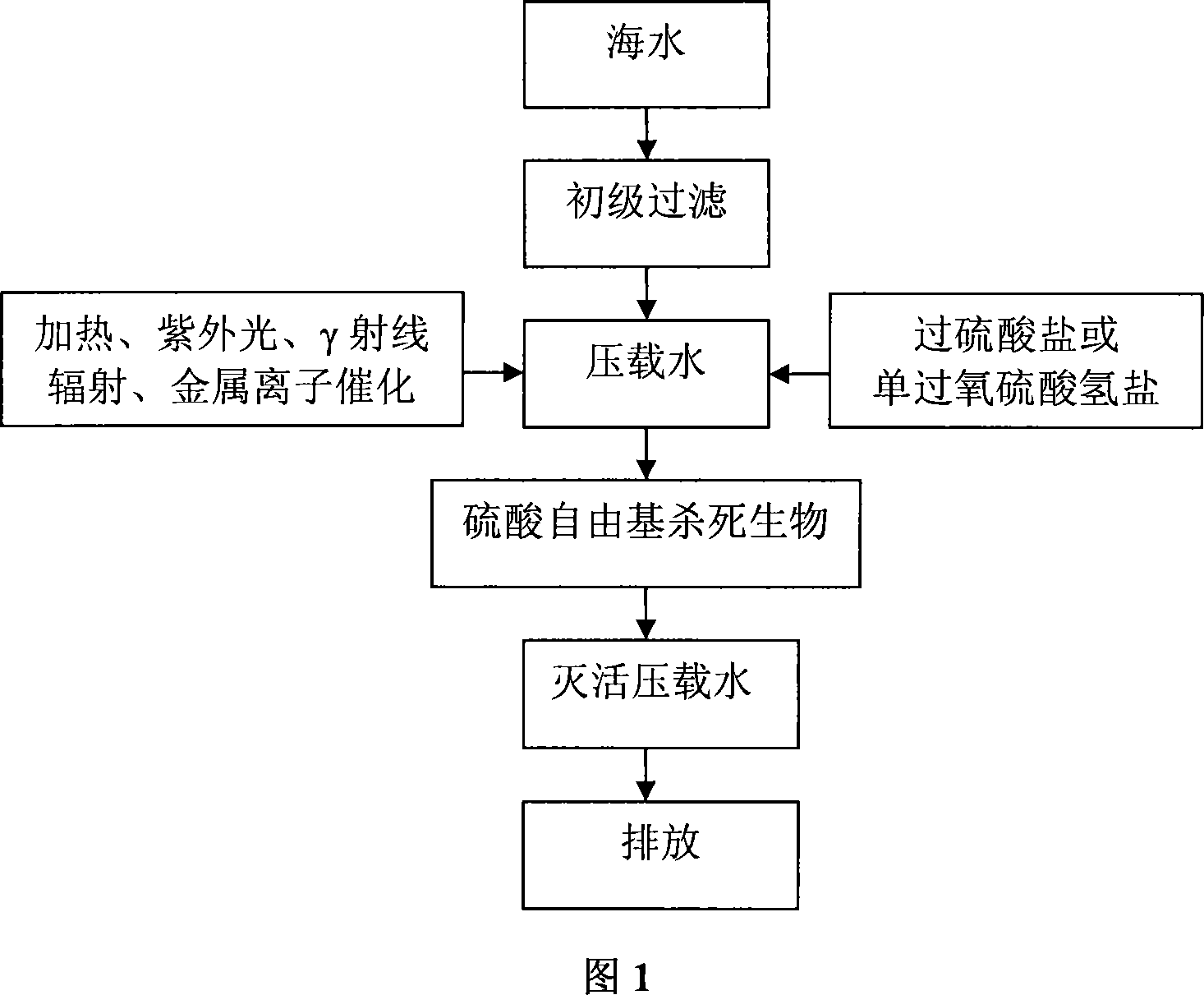Method for treating ship ballast by high-level oxidation technology based on sulphuric acid free radical
An advanced oxidation technology and ship ballast water technology, which is applied in the application fields of advanced oxidation technology and biological technology, can solve the problems of large investment and achieve the effects of low operating cost, high treatment efficiency and good effect
- Summary
- Abstract
- Description
- Claims
- Application Information
AI Technical Summary
Problems solved by technology
Method used
Image
Examples
Embodiment 1
[0024] After primary filtration of ballast water, the concentration of algae in it is 1.2×10 5 / mL, bacterial concentration 2.2×10 5 / mL, add persulfate in the ballast water, and generate sulfuric acid free radicals by ultraviolet light irradiation. When the concentration of sulfuric acid free radicals reaches 0.02mM / L, after 5 seconds, the algae counting method and the UV-visible spectrophotometer method are used to monitor the number of algae and bacteria, and the results show that no algae and bacteria are detected, and the killing effect up to 100%.
Embodiment 2
[0026] After primary filtration of ballast water, which contains protozoa, algae, bacteria, spores, etc., monoperoxyhydrogensulfate and metal ions are added to the ballast water, and the metal ion catalyzes monoperoxyhydrogensulfate to generate sulfuric acid free radicals. The concentration is At 0.02mM / L, after 5 seconds, protozoa, algae and bacteria were detected, and the results showed that no protozoa, algae and bacteria were detected. Bacterial culture was used to cultivate the treated ballast water. After 3 days of cultivation, no detection was found, indicating that all spores had been killed. The overall effect is a 100% kill rate.
PUM
 Login to View More
Login to View More Abstract
Description
Claims
Application Information
 Login to View More
Login to View More - R&D
- Intellectual Property
- Life Sciences
- Materials
- Tech Scout
- Unparalleled Data Quality
- Higher Quality Content
- 60% Fewer Hallucinations
Browse by: Latest US Patents, China's latest patents, Technical Efficacy Thesaurus, Application Domain, Technology Topic, Popular Technical Reports.
© 2025 PatSnap. All rights reserved.Legal|Privacy policy|Modern Slavery Act Transparency Statement|Sitemap|About US| Contact US: help@patsnap.com

